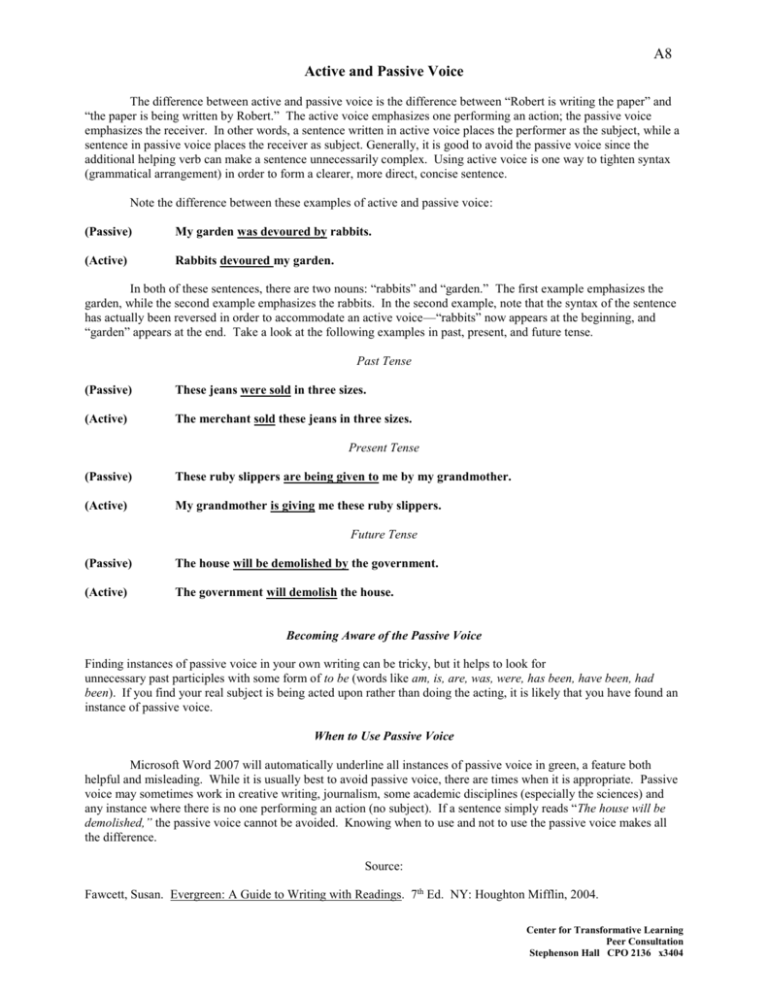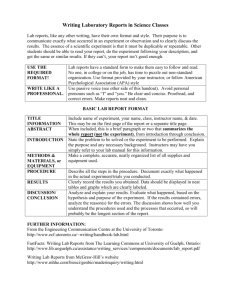A8 – Active and Passive Voice
advertisement

A8 Active and Passive Voice The difference between active and passive voice is the difference between “Robert is writing the paper” and “the paper is being written by Robert.” The active voice emphasizes one performing an action; the passive voice emphasizes the receiver. In other words, a sentence written in active voice places the performer as the subject, while a sentence in passive voice places the receiver as subject. Generally, it is good to avoid the passive voice since the additional helping verb can make a sentence unnecessarily complex. Using active voice is one way to tighten syntax (grammatical arrangement) in order to form a clearer, more direct, concise sentence. Note the difference between these examples of active and passive voice: (Passive) My garden was devoured by rabbits. (Active) Rabbits devoured my garden. In both of these sentences, there are two nouns: “rabbits” and “garden.” The first example emphasizes the garden, while the second example emphasizes the rabbits. In the second example, note that the syntax of the sentence has actually been reversed in order to accommodate an active voice—“rabbits” now appears at the beginning, and “garden” appears at the end. Take a look at the following examples in past, present, and future tense. Past Tense (Passive) These jeans were sold in three sizes. (Active) The merchant sold these jeans in three sizes. Present Tense (Passive) These ruby slippers are being given to me by my grandmother. (Active) My grandmother is giving me these ruby slippers. Future Tense (Passive) The house will be demolished by the government. (Active) The government will demolish the house. Becoming Aware of the Passive Voice Finding instances of passive voice in your own writing can be tricky, but it helps to look for unnecessary past participles with some form of to be (words like am, is, are, was, were, has been, have been, had been). If you find your real subject is being acted upon rather than doing the acting, it is likely that you have found an instance of passive voice. When to Use Passive Voice Microsoft Word 2007 will automatically underline all instances of passive voice in green, a feature both helpful and misleading. While it is usually best to avoid passive voice, there are times when it is appropriate. Passive voice may sometimes work in creative writing, journalism, some academic disciplines (especially the sciences) and any instance where there is no one performing an action (no subject). If a sentence simply reads “The house will be demolished,” the passive voice cannot be avoided. Knowing when to use and not to use the passive voice makes all the difference. Source: Fawcett, Susan. Evergreen: A Guide to Writing with Readings. 7th Ed. NY: Houghton Mifflin, 2004. Center for Transformative Learning Peer Consultation Stephenson Hall CPO 2136 x3404






